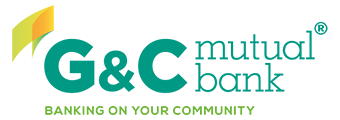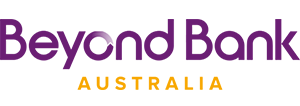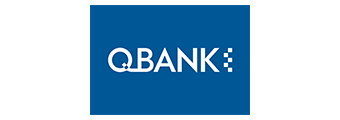
The dream of owning a home has become increasingly challenging for many individuals due to rising property prices.
To aid aspiring homeowners, the Australian Government introduced the First Home Super Saver (FHSS) scheme in July 2017. The FHSS is designed to help first-time buyers save money faster by using tax advantages in the superannuation system through voluntary concessional contributions.
In this article, we will explore how FHSS works, the potential savings it can generate, and whether it's worth pursuing.
What is the First Home Super Saver scheme?
The First Home Super Saver (FHSS) scheme is a government program offered to first-home buyers. It allows eligible Aussies to make voluntary contributions to their super fund to later withdraw and use towards a deposit on their first home.
Under the FHSS scheme, first-home buyers can contribute a maximum of $15,000 per financial year and up to a total of $50,000 overall per person. This means you need to have made over three years' worth of contributions at the annual maximum of $15,000 before you can withdraw the $50,000 total (plus associated earnings). Note that this applies to contributions counted towards FHSS since 1 July 2017.
So, if you're buying a house with your partner, you could withdraw a combined total of $100,000 (before tax) worth of voluntary contributions to go towards your deposit. You will also receive associated earnings that relate to those contributions, both concessional and non-concessional.
Voluntary concessional contributions (e.g. salary sacrifice) are taxed at a discounted rate of 15%, while non-concessional contributions are already taxed at their marginal rate.
Keep in mind your concessional contributions (taxed at 15%) cannot exceed $30,000 per year - this also includes the minimum 12% super guarantee (SG) from your employer.
Here is an example:
John earns a $100,000 base salary annually. His employer pays $12,000 (12%) into his super fund each year.
This means he can contribute an extra $18,000 into super at the concessional rate. But remember, FHSS rules still cap releasable contributions to $15,000 per year.
How much can you have released from the FHSS scheme?
The amount you can withdraw is limited and depends on the type of contributions you have made to your super fund.
-
Non-concessional contributions - 100%
-
Concessional contributions - 85%
-
Eligible personal voluntary super contributions you have claimed a tax deduction for - 85%
Deeming rates and the shortfall interest charge explained
Under the scheme, the ATO calculates your associated earnings using the 90-day bank bill rate + 3%. This figure is known as the shortfall interest charge (SIC).
The current SIC rate for the October to December 2025 period is 6.61%. It is updated quarterly, with rates for the next quarter announced two weeks before the start of the quarter.
As mentioned, under the FHSS withdrawal scheme, you receive the earnings on your contributions. Then, those associated earnings on your FHSS savings are 'deemed' using a formula calculated by the ATO to work out your tax liability.
So, regardless of whether you earned this rate or not through those super contributions, the ATO says you earned this amount. If your super fund netted you, say, 8% returns, you're coming out ahead. It's very possible for the SIC to be higher than your actual earnings, which can sting a bit.
What properties can be purchased with the scheme?
Contributions released under FHSS can be used to buy a new or existing home in Australia.
Vacant land is not eligible. However, you may use it to build a home on land, provided ownership hasn't transferred before your FHSS determination.
You have 12 months after the date you request a release of your FHSS amount to purchase a home or sign a contract to build. You must notify the ATO within 90 days of doing so. If you don't meet this requirement, you can apply for a one-year extension or re-contribute the funds to your super.
Alternatively, you can keep the money; however, this comes with a price. You must pay an additional 20% tax on the amount released through the FHSS scheme.
Who is eligible for the First Home Super Saver scheme?
It's all in the name - you can only use the FHSS scheme if you have never owned a property in Australia before.
However, there is an exception if you can prove to the ATO that you have suffered a financial hardship that has resulted in the loss of property interests. This could include divorce, bankruptcy, loss of employment, illness, and natural disaster. To apply for the financial hardship provision, head to myGov or fill out an application form via the ATO.
To be eligible for the FHSS program, you must:
-
Be at least 18 years of age (although you can make contributions at any age)
-
Not have previously made an FHSS release request
-
Never owned a property, including a home, vacant land, investment property, commercial property, etc.
-
Intend to live in the property for at least six of the first 12 months
How much could you save through FHSS?
The amount you could save through the FHSS scheme largely depends on the amount of voluntary contributions you make and the returns generated on those contributions.
According to the government's FHSS calculator, someone with a taxable income of $100,000 who salary sacrifices the maximum $15,000 a year into their super would reduce their take home pay by $10,200 annually.
That would see them with $48,172 available for a deposit after four years - $11,992 more than they would have had saved through a standard savings account.
However, there are savings accounts offering interest rates up to 5.00% p.a., so it's important to weigh what option will work best for you.
You will need to do a bit of maths to figure out if the tax advantages and capital gains versus the SIC rate are more beneficial than a savings account rate - which is less complicated, yet is also taxed at your marginal income tax rate.
Here are some other examples with different incomes (based on a four-year period):
|
FHSS $15,000 Annual Contribution For 4 Years |
|||
|
Taxable income |
Annual reduction to take home pay |
Deposit saved with FHSS |
Additional savings* |
|
$50,000 |
$11,150 |
$48,205 |
$9,241 |
|
$60,000 |
$9,975 |
$48,372 |
$13,038 |
|
$70,000 |
$10,025 |
$48,540 |
$12,934 |
|
$80,000 |
$10,175 |
$48,559 |
$12,435 |
|
$90,000 |
$10,200 |
$48,559 |
$12,378 |
Source: CSC First Home Super Saver Scheme calculator
*compared to a standard savings account
For some people, contributing the maximum $15,000 may not be the right path to take, and that's okay. You may want to take your time and contribute smaller amounts.
Here are a few examples of different income levels contributing $7,500 over seven years.
|
FHSS $7,000 Annual Contribution For 7 Years |
|||
|
Taxable income |
Annual reduction to take home pay |
Deposit available after five years |
Additional savings* |
|
$40,000 |
$6,025 |
$54,071 |
$9,272 |
|
$60,000 |
$4,988 |
$53,172 |
$16,528 |
|
$80,000 |
$5,100 |
$53,371 |
$15,819 |
|
$100,000 |
$5,100 |
$52,956 |
$15,403 |
Source: CSC First Home Super Saver Scheme calculator
*compared to a standard savings account
First Home Super Saver scheme pros and cons
Pros
-
You could save thousands in tax.
-
You could save for a deposit for your first home quickly.
-
You and your partner can both utilise the scheme towards the same house, doubling your deposit funds.
-
Time is on your side - you have 12 months to purchase a home with the funds (this can be extended).
-
You can pocket the gains and interest made on your contribution. The gains made through your super could be better than what you'd achieve on a savings account or term deposit.
Cons
-
By salary sacrificing, you will have less take home pay.
-
It can be a complicated and slow process. It could take several days to release your contributed cash.
-
As you can only contribute a maximum of $50,000, this may not be enough to cover a deposit if you want to avoid paying LMI. You'll still have to build up a deposit elsewhere, e.g. savings accounts or term deposits.
-
FHSS funds are deemed to earn at the SIC rate (currently 6.61% p.a.), which is potentially higher than what your super fund could achieve. This is essentially a gamble you make with the ATO as it's possible for your super fund not to earn this rate of return.
-
Super funds often invest in riskier asset classes (especially if you're young), which can fluctuate more wildly than a relatively safe savings account or term deposit.
Is the First Home Super Saver scheme worth it?
If you're looking to save on tax, it could be a worthwhile scheme to look into. Concessional super contributions are only taxed at 15% as opposed to your marginal income tax rate, so salary sacrificing some of your income into super can save you some money.
But keep in mind, when it comes time to withdraw the funds and associated earnings for your home deposit, the amount will be subject to a 'withdrawal tax'.
The 'withdrawal tax' is equal to your marginal income tax rate plus the Medicare levy, minus a 30% FHSS tax offset.
Example: 30% (marginal tax) + 2% (Medicare levy) = 32% - 30% (offset) = 2%.
Complicated enough?
When considering all the government/state schemes out there for first home buyers, you may find one that suits your personal and financial circumstances better. Compared to the First Home Owner Grant (FHOG), the FHSS may seem like a longer way to get into the market as it takes time to save a deposit.
The FHOG gets you the deposit cash boost you need almost immediately, worth between $10,000 and $30,000, depending on your state. It's also a lot simpler to understand.
However, the FHOG is only available per household, whereas a couple using the FHSS could save up to $100,000 if they stuck at it for long enough.
Alternatively, there's also the Australian Government 5% Deposit Scheme (previously Home Guarantee Scheme), which lets eligible buyers purchase a home with as little as 5% deposit without paying LMI. The scheme was expanded from 1 October 2025 to remove place limits, and it can be used alongside FHSS and state grants/concessions where eligible.
However, unlike the FHSS, which has no citizenship or residency requirement, the Australian Government 5% Deposit Scheme requires applicants to be Australian citizens or permanent residents.
Ultimately, FHSS does what it says on the tin: it converts part of your deposit-saving effort into the super tax environment, which can be materially beneficial for many first-home buyers. However, the $15k/$50k release limits and deemed earnings rules mean it's not a silver bullet for big deposits, and the timing/admin can be fiddly.
As the FHSS scheme can be complex to understand, consider speaking to a financial advisor to see if it's the right option for you.
Compare first home buyer loans
If you're planning to get your foot onto the property ladder, here are some first-home buyer loans currently available on the market you can consider.
Lender Home Loan Interest Rate Comparison Rate* Monthly Repayment Repayment type Rate Type Offset Redraw Ongoing Fees Upfront Fees Max LVR Lump Sum Repayment Extra Repayments Split Loan Option Tags Features Link Compare Promoted Product Disclosure





